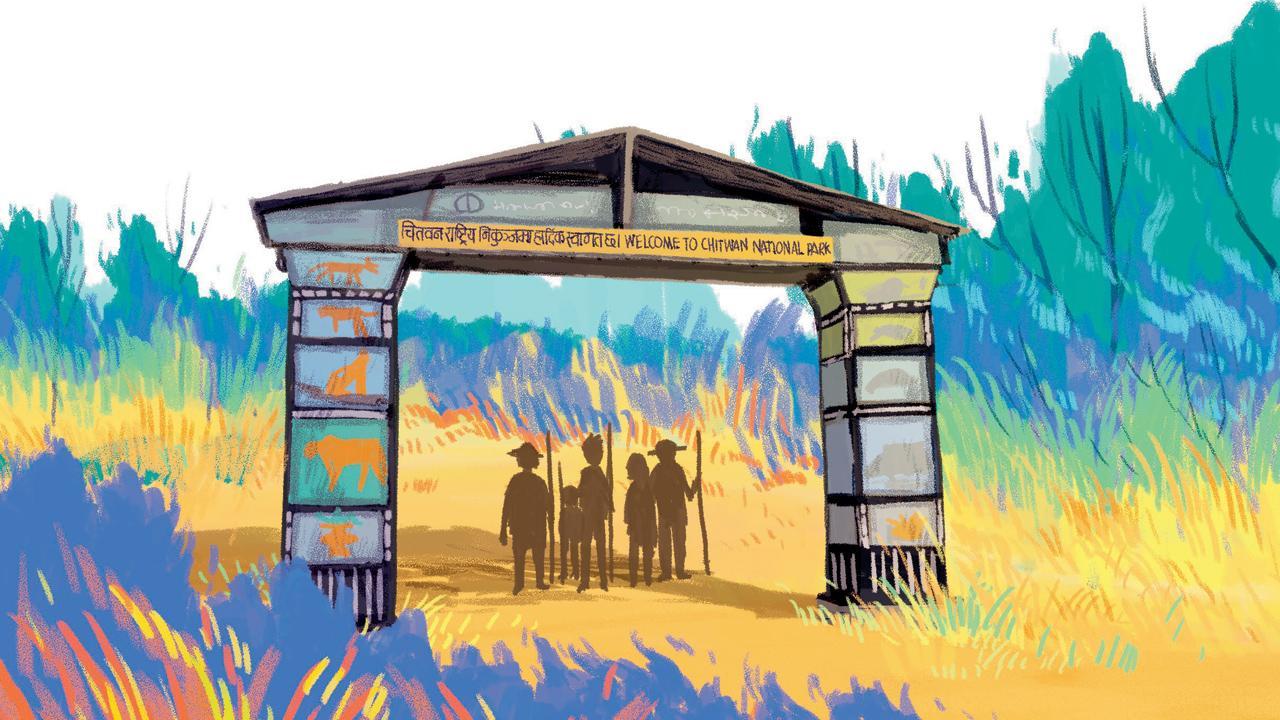A new title by Vaishali Shroff hopes to introduce kids to the natural wonders and conservation practices inside Nepal’s Chitwan National Park

Chitwan is Nepal’s first national park and is as big as 1,78,000 football fields. This UNESCO World Heritage Site is home to over 550 species of birds as well as the greater one-horned rhinoceroses, Royal Bengal tigers and clouded leopards
How different was it to plot a story inside a national park as opposed to, say, a city or a village?
Sita’s Chitwan (Puffin, Penguin Random House) is the journey of a girl who wants to be a nature guide like her father —someone who goes from being a spirited girl to one who is curious to learn the significance of cherishing the treasures of nature. It’s an inspiring story of accepting one’s shortcomings and turning them into assets.
Sometimes, I find it complex to plot a story set in an urban setting. In comparison, life inside a forest is simple, where I can relate with the flora and fauna. The fact that as a family, we spend at least one to two weeks inside a forest every year and frequent nature parks in Mumbai’s vicinity has improved my comfort level with the subject. Perhaps, the only challenge with such a book was to ensure that the forest’s flora and fauna, the geography and topography, and all the facts that are woven into the narrative are accurate.
ADVERTISEMENT
What makes Chitwan stand apart from other national parks/wildlife sanctuaries that you’ve visited?
I’ve visited many national parks in the last decade — in India, South Africa, and Chitwan in Nepal. Each has been special and has its own best practices, not only for conserving the forest and its inhabitants, but also to protect the people who live along its fringes. Having said that, Chitwan is the only forest that I’ve experienced closely on foot. We explored the forest all day, feeling it with all our senses and understanding the ecosystem from close quarters. Chitwan had gone from being a hunting ground for royals to a zero-poaching national park, which I thought was remarkable and exemplary. I felt it would be interesting to introduce a national park from our neighbouring country to our children, to the children of Nepal as well as those in other countries.
How did you ensure the storyline appealed to young readers?
The idea behind writing any non-fiction book is that it should not read like a textbook. Children should find it engaging enough to read it without feeling the pressure of an academic book. As a writer, it’s a constant worry — is my story reading like a chapter out of a textbook? Is it boring and meh? To avoid that, I put on my fiction hat and try to pack in as much excitement and adventure as I possibly can into the narrative. I also try to keep the language conversational. I ensure the narrative and facts blend seamlessly. So, while the first half of the book is Sita’s story, the second half is pure non-fiction, as narrated by Sita. The first-person narration helped to make the text less heavy and easier to read.
Vaishali Shroff
How important is it for children to learn about nature and conservation?
Sita’s Chitwan will be read by children, parents, and educators from different perspectives — while some may look at it from an information point of view, others might want to enjoy Sita’s journey as a nature guide and her adventures inside the forest. There will be others who will learn more about its animal and bird species, forest-related professions, or be inspired from Doma Paudel’s interview — Nepal’s first female nature guide. The knowledge that somewhere, a child will be inspired by reading this book and will grow up to conserve forests, wildlife or even the environment around us, fills my heart.
Bringing the national park to life
The illustrator Kalp Sanghvi arrived at a lush and warm palette after multiple discussions with the publisher and author: “I had visited Jim Corbett National Park just before this project. It helped me document the ecosystem as it is similar to that at Chitwan. It being a children’s book, I was keen on using bright, complementary colours to bring out the rich flora and fauna of the park. I also decided to give it a fresh spring vibe with patches of blues, reds and orange on top of the vegetation.” He used photographic references to break down every spread into a stylised version of the actual environment.
Using compositions and staging helped him bring Sita’s journey through the forest to life. “I blocked out patches of the vegetation with flat colour locks and added layers and strokes of detail to add depth to the artworks,” he adds, sharing that after developing the characters, he used the adjectives and the mood of the manuscript to derive their behaviour and expressions into his illustra-tions. “We organically added layers as we moved ahead.”
 Subscribe today by clicking the link and stay updated with the latest news!" Click here!
Subscribe today by clicking the link and stay updated with the latest news!" Click here!






